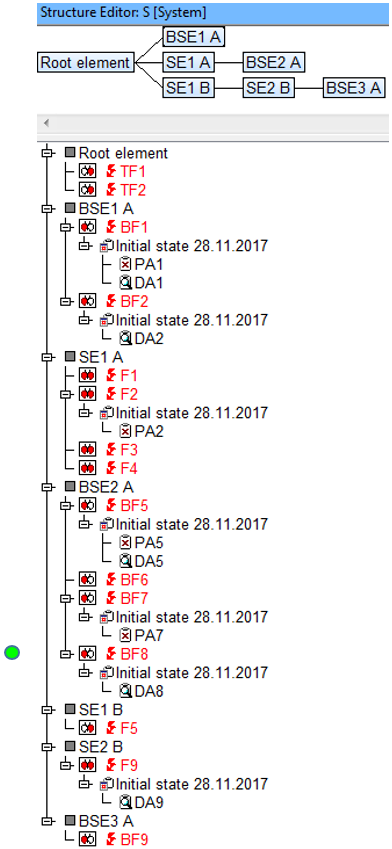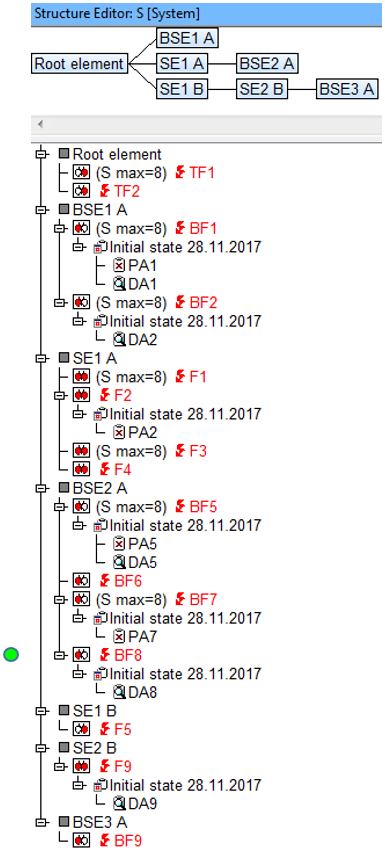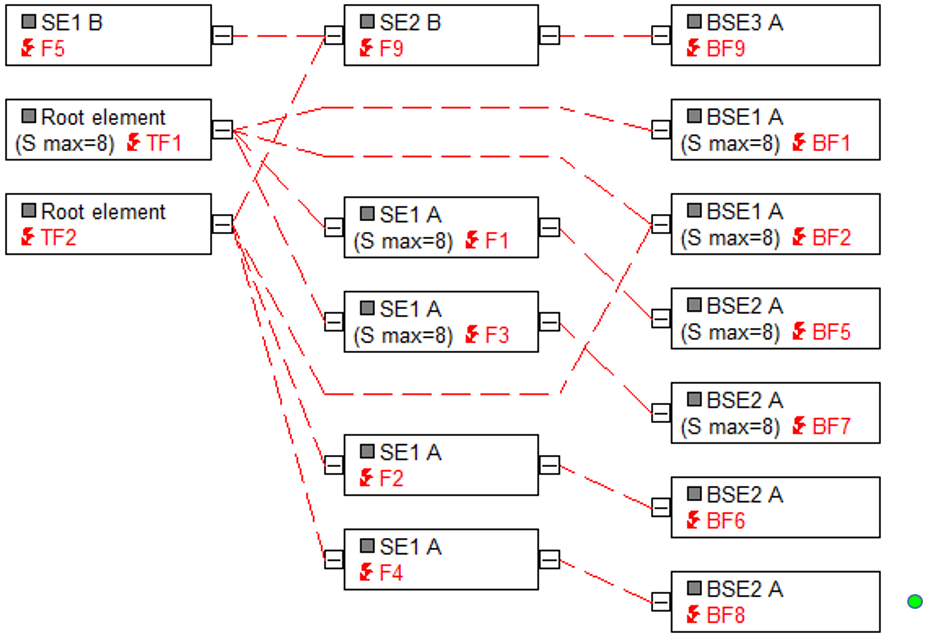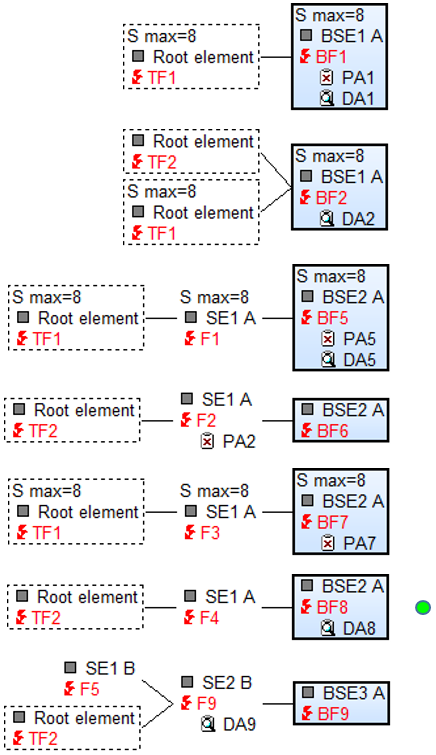Search:
Base failures with actions without S rating in effects chain
Explanation:
A search will be performed for base failures which have actions assigned to them (preventive-/detection actions), for which no S rating has been assigned. For a base failure to have an S rating, at least one of its effects must have been assigned an S rating.
Note:
- Base failures (BF) are failures which have effects but no causes.
Example:
Abbreviations
- ASIL = Automotive safety integrity level
- BF = Base failure of a base function
- BFn = Base function of a base structure element
- BSE = Base structure element
- Cl Prc = Classification for process characteristic
- Cl Prd = Classification for product characteristic
- Cl Req = Classification for requirement
- CM = Control method
- DA = Detection action
- DC = Diagnostic coverage
- DSCF = Dangerous safety critical failure
- Er Det = Error detection
- Er Resp = Error response
- F = Failure
- FIT = Failure in time
- Fn = Function
- FSM = Functional safety management
- IE = Inspection equipment
- LF = Latent fault
- LFM = Latent fault metric
- OC = Operating condition
- PA = Preventive action
- PE = Process element
- PFH = Probability of failure per Hour
- PMHF = Probabilistic metric for random hardware failures
- PrcC = Process characteristic
- PrdC = Product characteristic
- QM = Quality method
- QR = Quality rule
- Req = Requirement
- RMR = Risk Matrix Ranking
- RP = Reaction plan
- SE = Structure element
- SE ErDet = Structure element for error detections
- SE ErResp = Structure element for error responses
- SFF = Safe failure fraction
- SG = Safety Goal
- SIL = Safety integrity level
- SM = Organisational-SE for “safety mechanisms”
- SPF = Single point fault
- SPFM = Single point fault metric
- TF = Top failure of a top function
- TFn = Top function at root element
- TS = Test sample

- The above structure contains seven base failures, which can be recognized with the hot-click icon
 . This icon (check display options if not visible in IQ-Software) indicates that the failure is connected to at least a further failure (in direction of effects) but has no failures in direction of causes. This can be seen more clearly in the image below (of the failure net) whereby the BF is found on the far right of the net and therefore has no causes.
. This icon (check display options if not visible in IQ-Software) indicates that the failure is connected to at least a further failure (in direction of effects) but has no failures in direction of causes. This can be seen more clearly in the image below (of the failure net) whereby the BF is found on the far right of the net and therefore has no causes. - The example structure contains nine actions in total, of which five are preventive actions (PA; Hot-click icon
 ) and four are detection actions (DA, Hot-click icon
) and four are detection actions (DA, Hot-click icon  ) defined at failures. It is particularly important for this Quality Rule which actions are anchored at base failures. The Failure Net Editor image below shows this more clearly.
) defined at failures. It is particularly important for this Quality Rule which actions are anchored at base failures. The Failure Net Editor image below shows this more clearly. - Using the images of the Failure Net Editor, Graph Editor and Structure list it is possible to see whether the effects of the BF have an assigned S rating. For this, the display option “Severity (maximum) must be active.
Structure list with “Severity (maximum)” Display option active:

Graph Editor:

Failure Net Editor (failure net from viewpoint of BF):

With the Display options “Actions” and “Severity (maximum)” active it is possible to see the preventive- and detection actions at the failures as well as the S max ratings.
Search result: ![]()
In this example, just one failure is found that is a base failure with an action(s) (here a detection action), whereby none of its effects have an S rating assigned. This is BF8.


